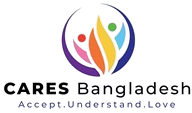Paint Your Path to Healing
ART THERAPY
Art therapy is a therapeutic approach that uses creative processes such as drawing, painting, sculpting, and other art forms to improve physical, emotional, mental, and social well-being.When integrated into Occupational Therapy (OT), art therapy becomes a functional and creative way to achieve therapeutic goals, helping clients enhance their independence and quality of life.Art-based therapies, as nondirective methods, attempt to visualize past traumatic experiences and harmonize the individual with himself and with others.

